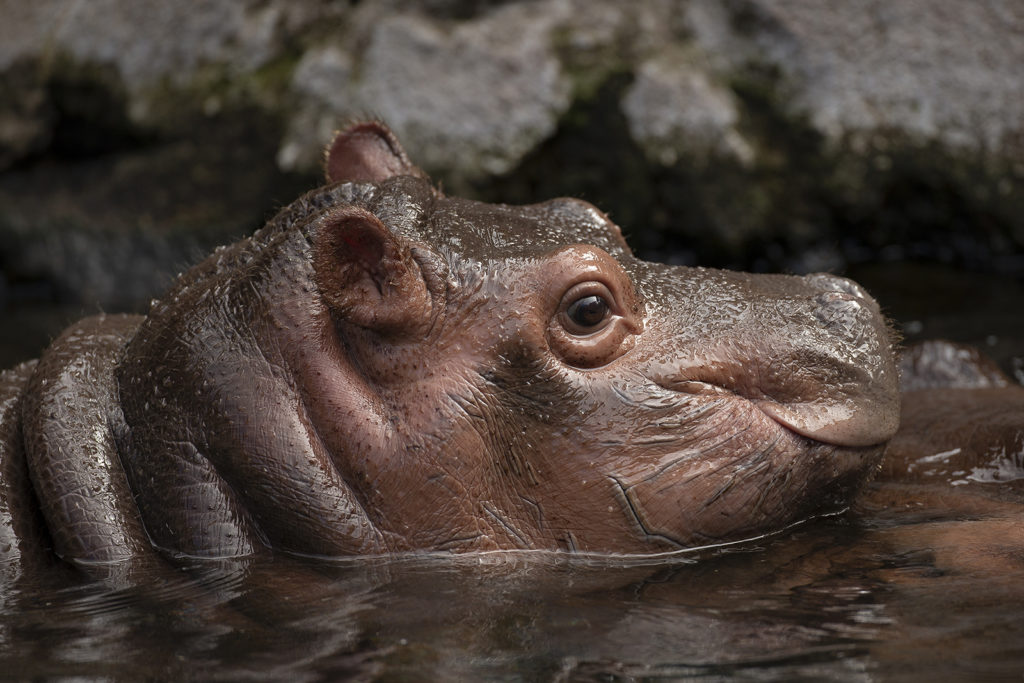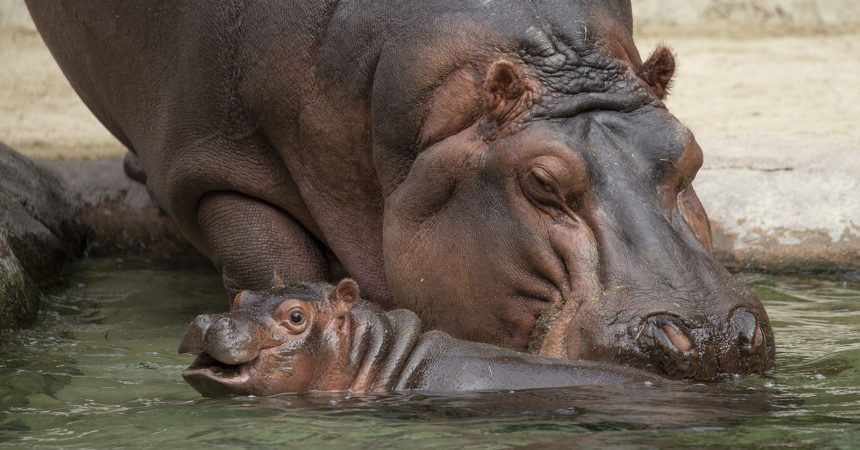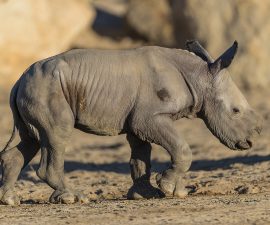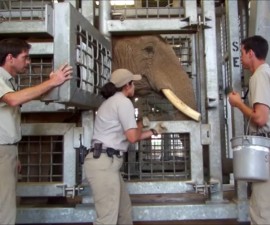Amahle, the San Diego Zoo’s youngest river hippo, is growing rapidly—and she’s already showing her curious side, exploring her habitat and seeking out new areas to investigate when her mom, Funani, isn’t right by her side. Hippo calves typically stay close to their mothers for up to two years after birth. They rely on mom to learn how to safely navigate their surroundings, and how long they can stay underwater before surfacing to take a breath. While Funani allows her 2-month-old to explore a bit on her own, mom closely monitors Amahle wherever she goes—and the youngster’s ever-increasing level of energy and playfulness is a clear sign she’s a healthy and active calf, said San Diego Zoo wildlife care specialists.
“Amahle seems to be quite smart and outgoing, although she still has a way to go to build up her stamina,” said Jennifer Chapman, wildlife care specialist at the San Diego Zoo. “She actively chooses to participate in training sessions with specialists and picks up on behaviors very quickly.”
Amahle (pronounced ah-MA-shleh) is the ninth river hippo calf born at the San Diego Zoo to Funani, and is Funani’s 13th calf. The young hippo received her name last month following a nationwide online vote. Amahle means “beautiful one” in Zulu. Her name was revealed in front of a crowd of enthusiastic San Diego Zoo team members and volunteers during a live, early-morning “Good Morning America” television segment.
“Amahle is a Zulu name, just like her mom’s, and she certainly is a beautiful one,” said Chapman after the naming announcement. “The fact that so many people were part of this process has been amazing. Amahle was a name suggested multiple times, and it couldn’t be a better fit.”

The hippopotamus is listed as Vulnerable on the International Union for Conservation of Nature (IUCN) Red List of Threatened Species. The primary threats to hippos are illegal and unregulated hunting for meat and the ivory from their canine teeth, as well as habitat loss. Hippos can still be found in a number of countries in sub-Saharan Africa.
Currently, the San Diego Zoo and the San Diego Zoo Safari Park are closed to guests due to restrictions related to COVID-19, however wildlife care specialists and veterinarians remain on grounds, attentively caring for the more than 7,000 animals that live in the many diverse habitats of the Zoo and the Safari Park. Although guests can’t visit the parks in person right now, many online options are available to bring live wildlife video and a wealth of information on hundreds of species to people at home. Anyone with a computer or a smartphone can learn more about hippos and other species by visiting the San Diego Zoo Animals & Plants page, and they can find more fascinating articles about wildlife and conservation efforts at ZOONOOZ. Parents and kids who want to see what’s going on right now in various habitats of the San Diego Zoo and San Diego Zoo Safari Park can view one of the many live wildlife cams; and teachers planning at-home learning experiences can instantly access a wide variety of supplemental curriculum on wildlife and habitats.
Bringing species back from the brink of extinction is the goal of San Diego Zoo Global. As a leader in conservation, the work of San Diego Zoo Global includes on-site wildlife conservation efforts (representing both plants and animals) at the San Diego Zoo, San Diego Zoo Safari Park, and San Diego Zoo Institute for Conservation Research, as well as international field programs on six continents. The work of these entities is made accessible to over 1 billion people annually, reaching 150 countries via social media, our websites and the San Diego Zoo Kids network, in children’s hospitals in 12 countries. The work of San Diego Zoo Global is made possible with support from our incredible donors committed to saving species from the brink of extinction.





